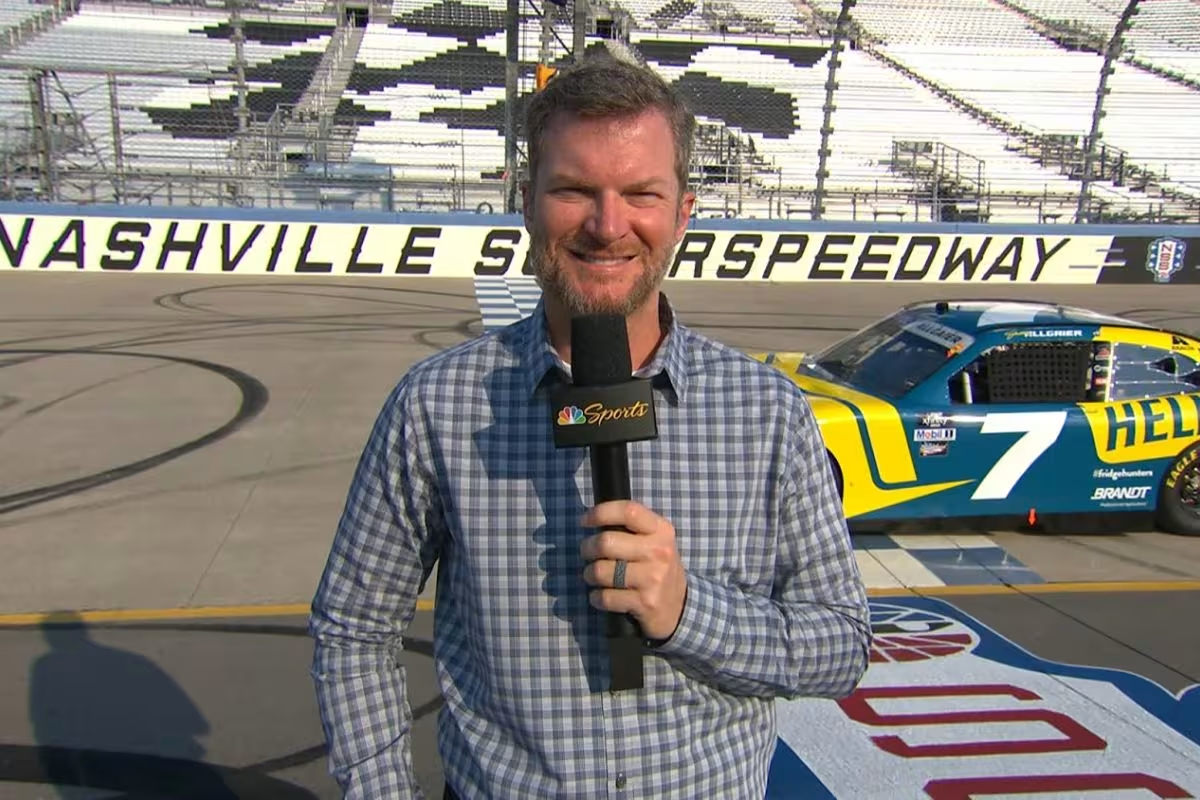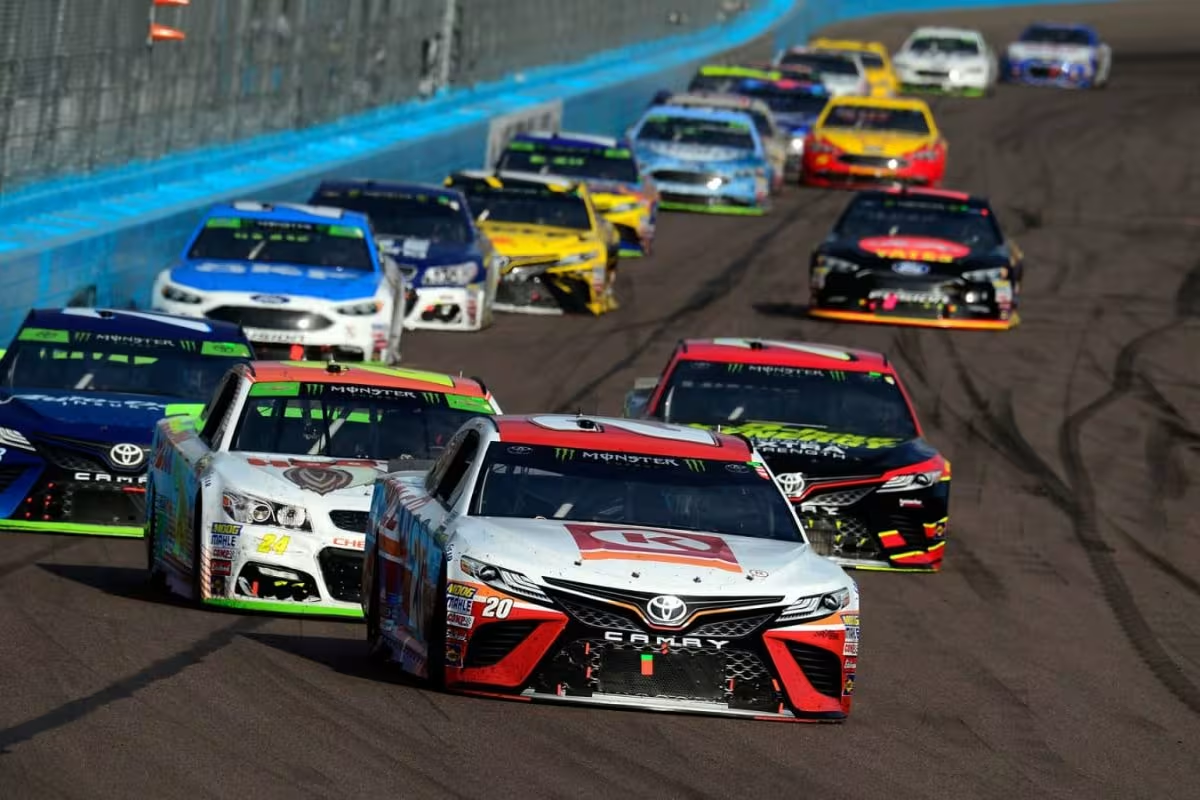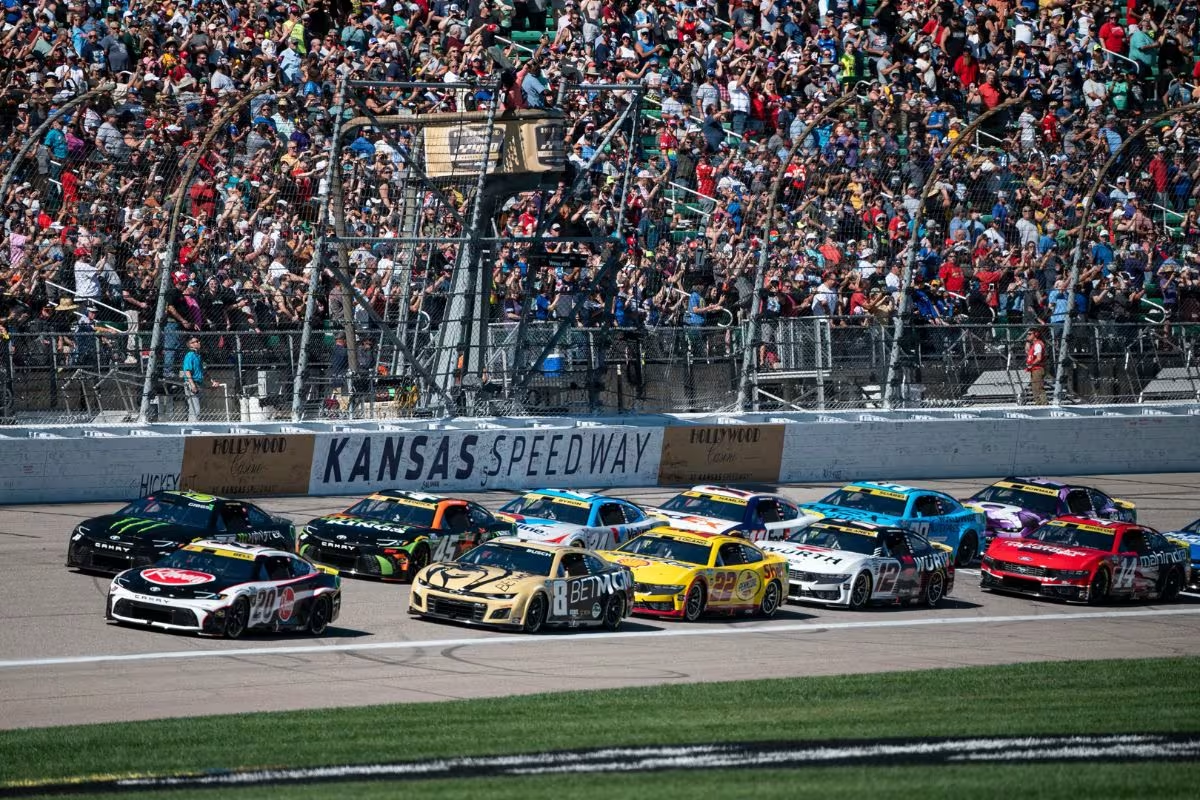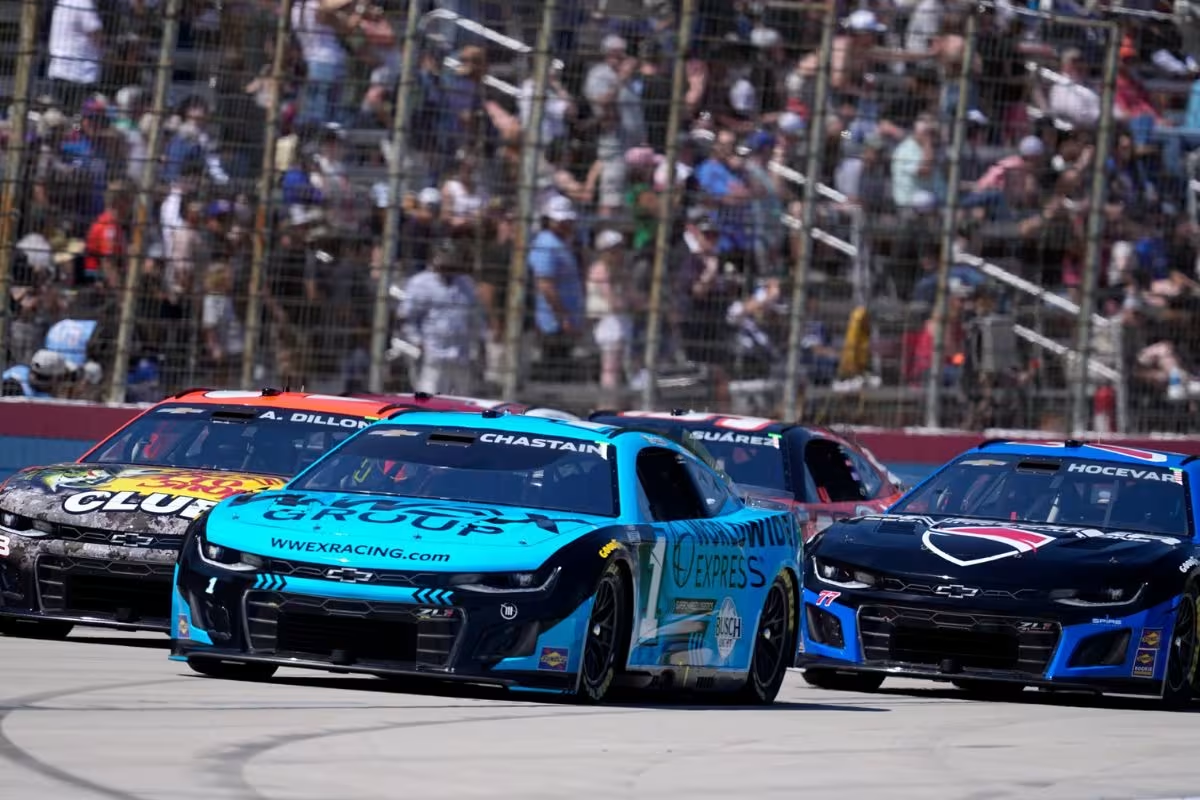Dale Jr. Saves NASCAR From Controversy: Dale Earnhardt Jr.‘s intervention in the recent NASCAR rule enforcement controversy highlights a pivotal intersection for the sport, particularly following the Kansas Speedway incident. By advocating for a consistent application of the Damaged Vehicle Policy, he emphasizes the tension between emotional responses and the importance for uniformity in governance. This raises crucial questions about the balance between safety, fairness, and the human element inherent in racing. As NASCAR grapples with these complexities, the implications of Earnhardt Jr.’s stance may redefine the sport’s regulatory landscape and its approach to stakeholder engagement moving forward.
Key Highlights
- Dale Earnhardt Jr. emphasized the importance of adhering to NASCAR’s established rules to maintain order and fairness during the Kansas Speedway incident.
- He highlighted the Damaged Vehicle Policy’s role in ensuring safety and competitive integrity throughout the racing field.
- Earnhardt Jr. acknowledged the emotional challenges faced by teams when human feelings clash with strict regulations.
- He advocated for uniform enforcement of rules to protect the sport’s integrity and prevent perceived biases.
- Dale Jr. called for rational discussions among stakeholders to refine NASCAR’s governance and address ongoing challenges effectively.
Incident Overview
The recent incident at Kansas Speedway highlighted a remarkable moment in NASCAR‘s ongoing efforts to maintain order and fairness during races. In the Round of 12 opener, Josh Berry found himself at the center of controversy following an early ejection that left both him and his team perplexed. The race sparked off with dramatic intensity as Ty Dillon made contact with Harrison Burton, causing a chain reaction that ultimately led to Berry’s No. 4 Ford spinning out due to multiple flat tires.
“I don’t know if I am missing something or if there was something different than normal.” – Berry
The confusion surrounding Berry’s inability to navigate his vehicle prompted a swift response from NASCAR, which penalized the Stewart-Haas Racing team. The ejection was met with outrage from the team, particularly from crew chief Rodney Childers, who deemed the decision arbitrary. Such reactions emphasize the delicate balance NASCAR must maintain between enforcing rules and ensuring that teams feel heard and understood.
The incident serves as a crucial reminder of the complexities inherent in race management, where the actions of one driver can greatly impact multiple competitors. Additionally, the implications of this decision extend beyond the immediate event, raising questions about consistency in rule enforcement and the potential for perceived bias.
As NASCAR navigates these challenges, the support from influential figures like Dale Earnhardt Jr. may play an essential role in reinforcing the notion that rules are paramount, ultimately guiding the sport toward greater integrity and fairness in its competitive landscape.
Dale Earnhardt Jr.’s Perspective
Amid the unfolding controversy at Kansas Speedway, Dale Earnhardt Jr. offered a measured perspective that highlights the complexities of NASCAR’s governance. He emphasized the necessity of adhering to established rules and protocols, specifically referencing the Damaged Vehicle Policy instituted in 2017. This policy was designed to standardize the handling of damaged vehicles in a sport where safety and competitive fairness are crucial.
Earnhardt Jr. acknowledged the challenges that arise when human emotions intersect with strict regulations. He noted that while the situation involving Josh Berry’s team was unfortunate, NASCAR’s commitment to enforcing the rules uniformly is essential for the integrity of the sport. By prioritizing consistency, NASCAR aims to minimize favoritism and maintain a level playing field, even if the application of these rules can sometimes appear harsh.
“Agree or disagree, the rule’s the rule. It’s not a new rule.”
“Before the damaged vehicle policy, our race teams had crash carts…with all front, rear suspensions – every single part that could be bent or torn up…weighing hundreds of thousands of pounds…You had a complete fender, nose kit, body pieces, bumpers, and tails on a different cart. So two crash carts per car, per team hauling up and down the road in these haulers. NASCAR eventually said, no more changing engines.” – jr
He further articulated that the subtleties of each incident—similar to those seen with Ryan Blaney at Watkins Glen—highlights the importance of a clear framework. Earnhardt Jr.’s support for NASCAR’s leadership in this instance reflects a broader understanding that governance in motorsport must balance leniency with discipline to uphold competitive integrity.
In a rapidly evolving landscape, where teams and fans similarly can be swayed by emotional responses, Earnhardt Jr.’s perspective serves as a reminder of the importance of rational discourse. His insights encourage stakeholders to engage thoughtfully with the rules that govern the sport, fostering a culture that values both adherence to regulations and the spirit of competition.
Reasoning Behind the Policy
Recognizing the complexities surrounding NASCAR’s Damaged Vehicle Policy, it becomes evident that its establishment was driven by the need for standardized procedures in an environment where competitive fairness is paramount. Dale Earnhardt Jr. articulated the challenges that led to this policy, emphasizing its historical context within the sport.
Prior to the implementation of the Damaged Vehicle Policy, teams utilized extensive crash carts equipped with every conceivable replacement part, creating a scenario where resource disparities could greatly influence race outcomes. The policy aims to level the playing field by restricting the ability of teams to make exhaustive repairs during a race. This prevents well-funded teams from leveraging their financial advantages to utilize a multitude of spare parts, which could distort competition and undermine the integrity of the sport.
As Earnhardt noted, the rule is not a novel imposition but rather a crucial evolution in response to previous practices that could have compromised fair competition. Furthermore, the policy addresses safety concerns, ensuring that vehicles on the track meet specific integrity standards.
NASCAR’s Response and Future Considerations
NASCAR’s proactive stance in addressing the implications of the Damaged Vehicle Policy reflects its commitment to both competitive integrity and driver safety. As highlighted by Dale Earnhardt Jr., the presence of severely damaged cars on the track poses risks not only to the drivers involved but also to the complete race dynamics. The organization is aware that allowing these vehicles to remain on the track can lead to slower speeds and potential hazards.
“Also, you have cars out there that were so badly damaged, running so slow…And NASCAR was trying to get those cars off the racetrack.”
“I feel like this is something that they’ll probably look into. I mean, they’re not gonna change the rule today…after what happened to Josh. They might if they found a really easy solution.” – jr
In view of recent events, NASCAR executives have indicated that they will review the policy during the offseason, exploring potential adjustments that maintain the spirit of competition while ensuring safety. This response demonstrates NASCAR’s dedication to refining its regulations based on real-world experiences and driver feedback.
NASCAR’s Ongoing Challenges and Future Reviews
Multiple challenges currently confront NASCAR as it navigates a complex landscape of competitive integrity, driver safety, and evolving technology. The sport’s leadership is under scrutiny for several contentious issues, including the controversial charter deal and Goodyear’s recent tire failures. Amidst these challenges, the performance and treatment of drivers like Ryan Blaney and Josh Berry highlight the need for a review of existing rules and procedures.
- The Next-Gen car raises questions about safety and performance, necessitating thorough evaluation.
- Feedback from respected figures within the sport indicates a growing discontent with current regulations.
- Future adjustments to rules could align NASCAR more closely with driver expectations and competitive fairness.
NASCAR executives are aware of these pressing concerns. Brad Moran, the Cup Series Managing Director, has acknowledged the need for a detailed review, particularly regarding the Next-Gen car, which has been implicated in recent mishaps. His remarks signal a willingness to adapt and learn from the challenges faced this season.
“We’re learning, every time it goes out there, different ways this car reacts. It certainly reacts a little different in incidents and crashes. And there’s certain parts on the car that are a little weaker, but there’s definitely many parts that seem to hold in a lot better, obviously, being the body for one, which changes the game. We’re going to go back. We looked at it last offseason. We’re going to take a much harder look.” – Moran
As both Blaney and Berry’s teams express frustration under the current rules, the upcoming winter review presents an opportunity for NASCAR to recalibrate its approach.
If Dale Earnhardt Jr.’s insights lead to meaningful changes, it could pave the way for a more equitable racing environment next season. Ultimately, NASCAR’s ability to address these ongoing challenges will play a vital role in shaping the future of the sport.
News in Brief: Dale Jr. Saves NASCAR From Controversy
In consideration of recent controversies surrounding NASCAR’s rule enforcement, Dale Earnhardt Jr.’s advocacy for consistent application of the Damaged Vehicle Policy emphasizes the necessity of maintaining safety and fairness within the sport. The call for rational dialogue among stakeholders highlights the ongoing challenges faced by NASCAR in governance and rule enforcement. A commitment to uniformity in regulations will be vital for preserving the integrity of racing and fostering a more equitable competitive environment.
ALSO READ: Dale Earnhardt Jr. Shares His Hidden Fear: The Truth About His Trophies




